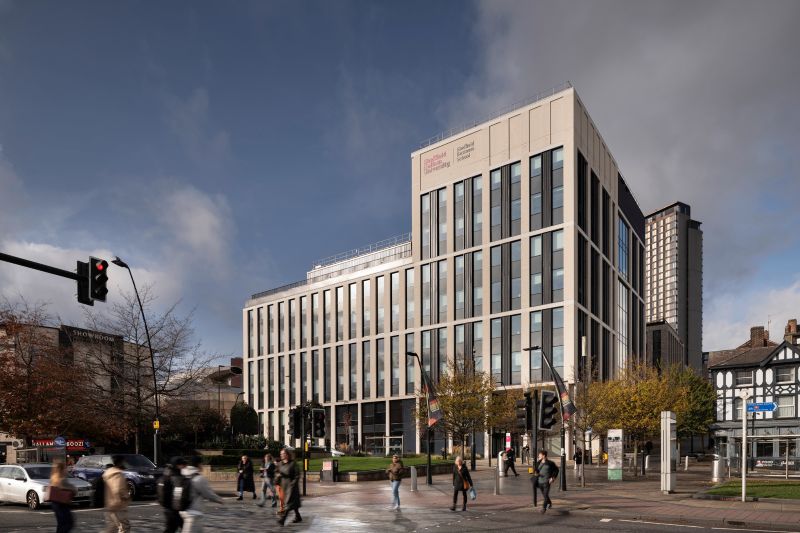There are many things to consider when specifying a glazed canopy or walkway. Where is it going to be used? What is its purpose? Do you have a particular design in mind? How quickly is it required? Will it be south-facing? Will it need any weather protection at the sides? What will it be made from? Does the roof need to be non-fragile? How ‘green’ does it need to be? What’s the budget?
In order to achieve optimum results for your client it makes sense to employ a canopy supplier who can work with you on all of these elements. You need a company with years of practical experience who can demonstrate their professionalism and commitment to health and safety by holding accreditation to ISO 9001, as well as CHAS and Constructionline. They should be able to undertake the complete process of design, manufacture and installation for you, and relevant staff should CRB checked so school installations can be completed with total peace of mind.
Canopies make useful additions within school grounds, at colleges and universities, outside hospitals and on industrial/commercial premises.
These external structures create great covered waiting areas at schools for both pupils and parents. Fitted adjacent to nursery classrooms they enable easy access to sand and water play while older children can use a canopy as an outside classroom or it can become a ‘quiet’ area. Larger models, with and without glazed sides, make extremely cost-effective outside eating areas that can be installed in considerably less time than a traditionally built dining room. Canopies may be used as buggy or bike shelters and, when fitted with lockers, create cloakrooms adjoining classrooms. Glazed walkways provide covered transit routes between different buildings on any site, whilst bespoke designs may be created for bus shelters and smoking areas.
The framework for a canopy may be constructed from aluminium, steel or timber. Aluminium is a favourite choice because it is light in weight so is relatively easy to transport and install, it won’t rust over time and once powder coated shouldn’t require repainting in the future. It may also be recycled at the end of its long life without losing any of its properties. Steel can create larger spans than aluminium and might cost a little less, but it will rust over time and it is heavy to move and install. There are a range of different timber options, varying from glu-lam beams down to treated timber and whilst these can look very elegant they will require an ongoing maintenance programme.
When it comes to the roof glazing polycarbonate is one of the most favoured choices. Being resistant to UV in sunlight, it has a great fit as a canopy roof. It is available in a solid form that looks like glass and in a multiwall version that helps to retain heat underneath – even in an open-sided structure. The main advantage of polycarbonate lies in its strength which is retained at both high and low temperatures, combined with its very light weight. When installed within some proprietary systems polycarbonate roof glazing panels can also meet the recommendations of the Health & Safety Executive for non-fragile roofs. Specifying these products is very much in line with CDM regulations for designers to ‘eliminate or reduce risk’. For anything south-facing you should consider using a bronze tinted grade as this will help to keep out the heat. An opal tint is also available – a good option where you have windows overlooking a canopy as its use can help to provide privacy to those underneath. And, just like aluminium, polycarbonate may be recycled once its practical life is over.
A wide range of roof designs can be incorporated into canopies and walkways: mono or duo pitched, barrel vaulted, waveform shaped or curved at an angle. They can be lean-to or free-standing. It is always wise to check the composition of any wall that might hold a lean-to or cantilever canopy and if in any doubt stick with a free-standing model. Cantilevers, in particular, should be specified with great care. A good design team will be able to offer a range of suggestions. They will also ensure that your design is structurally sound. Post fixings should be underground so there are no trip hazards and the use of stainless steel fixings is a sign of a quality product.
To finish off your canopy you might wish to consider some optional extras. Vertical panels glazed with polycarbonate will help to keep out the prevailing wind and padded post protectors are useful in school playgrounds. Lockable roller shutters enable items to be safely protected, while signage added to canopies can help to highlight building entrances. So, through careful choice of canopy you can create an attractive, long-lasting, multi-functional space to delight your client.




















